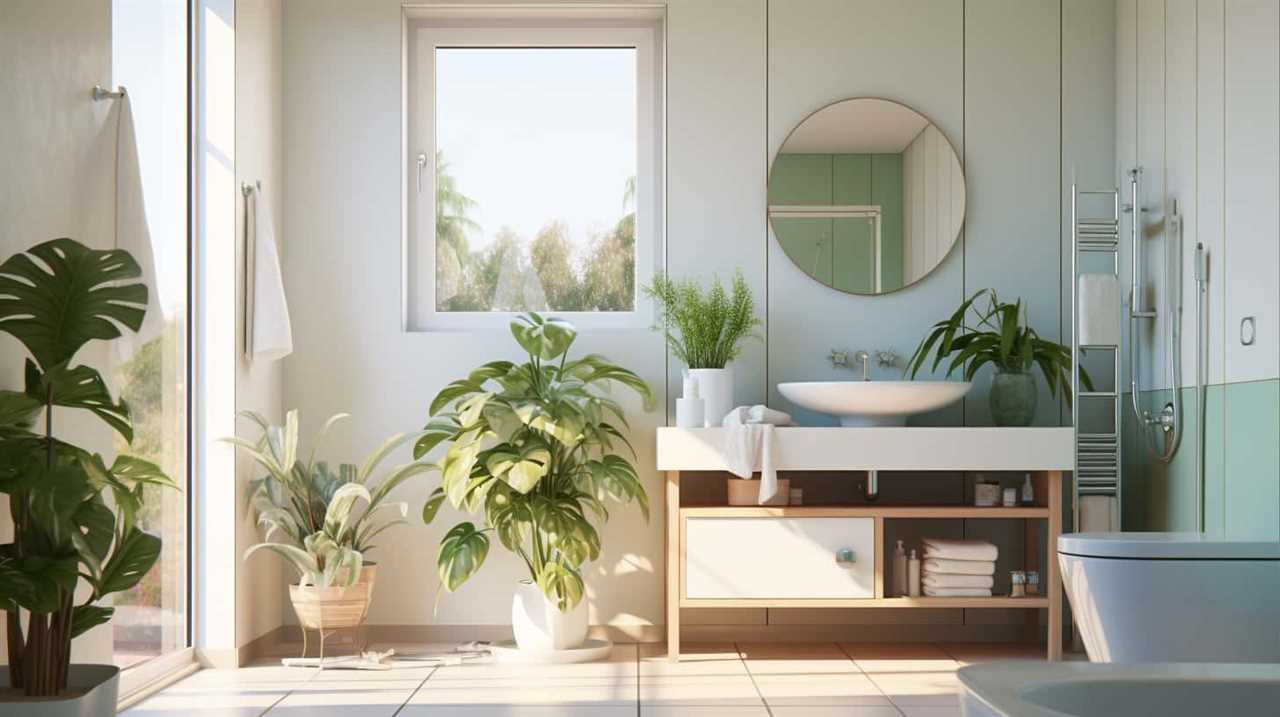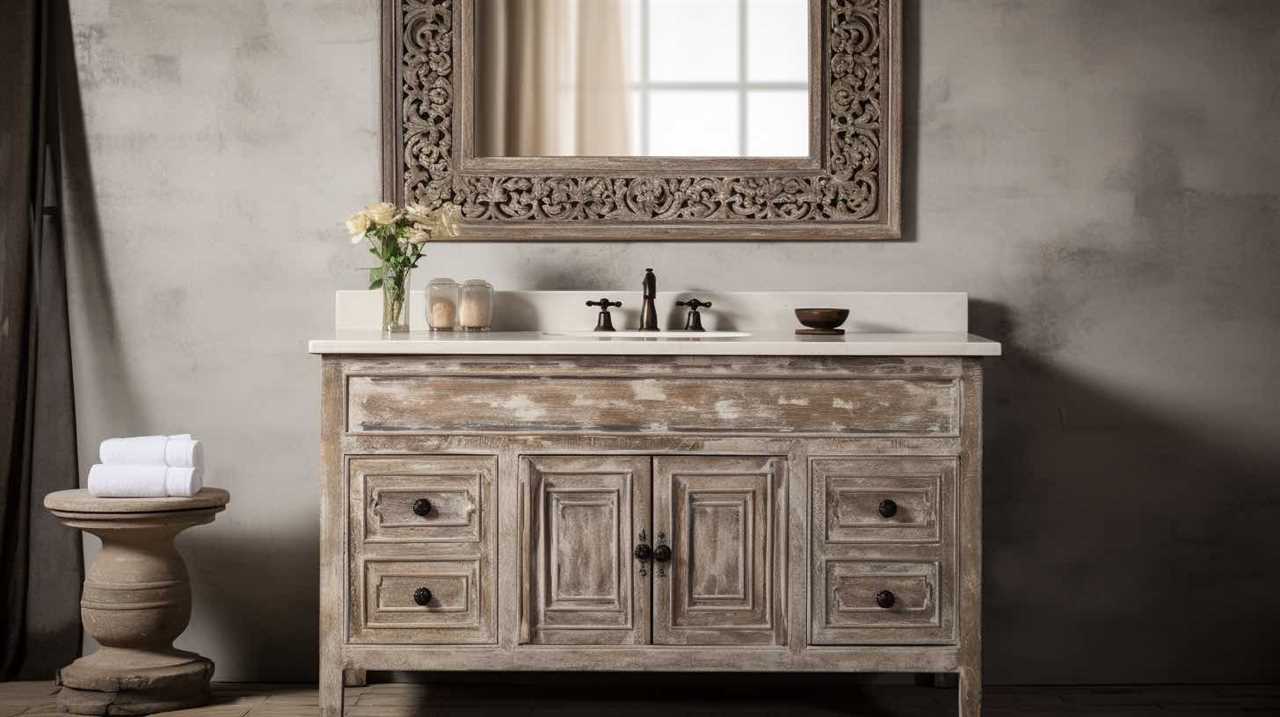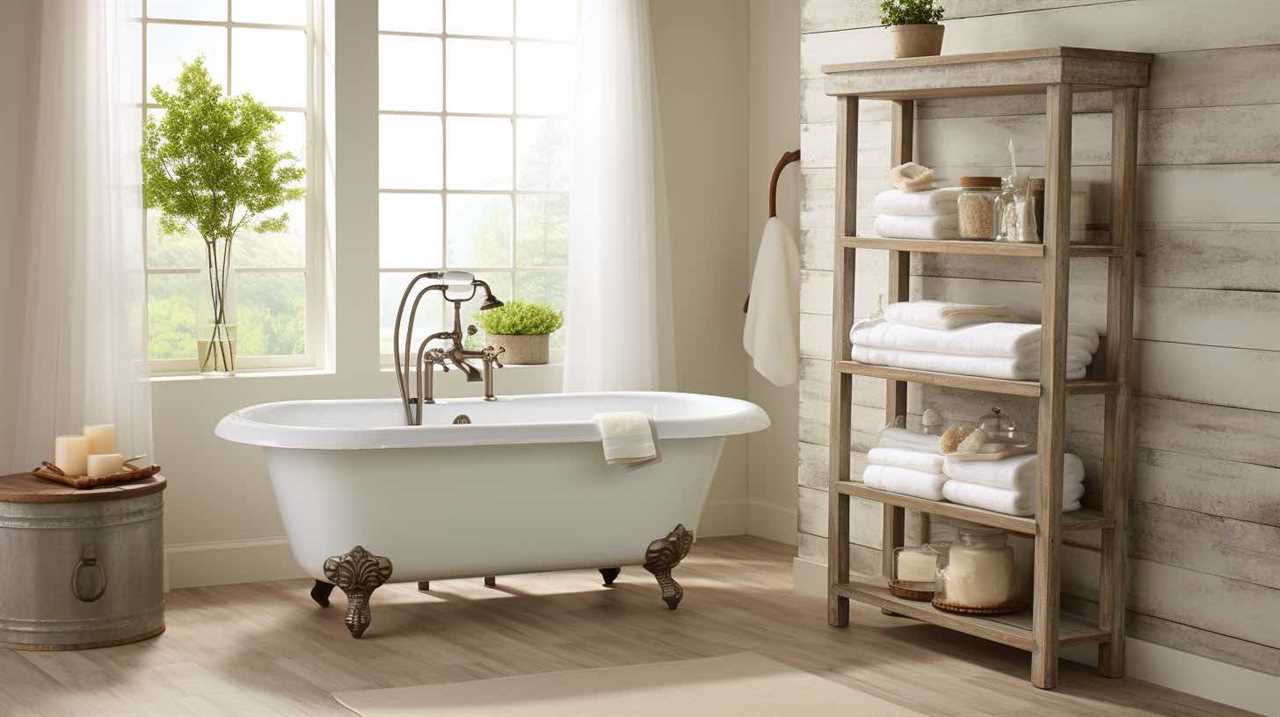Welcome to our guide on the benefits and care of shower plants. We’re here to help you transform your bathroom into a lush and invigorating oasis.
With the right plants, you can enjoy the soothing presence of nature as you cleanse and rejuvenate. From selecting the perfect plants to troubleshooting common issues, we’ll provide you with precise and detailed information to ensure your shower plants thrive.
Get ready to master the art of shower plant cultivation and elevate your daily shower routine.
Key Takeaways
- Shower plants improve air quality and release oxygen.
- They create a calming and relaxing atmosphere in the bathroom.
- Shower plants require minimal care and can thrive in high humidity.
- Styling ideas such as using macramé plant hangers or creating succulent arrangements can enhance the aesthetic of the shower.
The Benefits of Shower Plants
In our experience, having shower plants offers numerous benefits for both our mental and physical well-being.

Indoor plants have long been known to improve air quality by removing toxins and releasing oxygen. Incorporating plants into bathroom decor not only adds a touch of natural beauty but also enhances the overall ambiance of the space.
The presence of plants in the shower can create a calming and relaxing atmosphere, promoting stress reduction and mental clarity. In addition, the moisture-rich environment of the bathroom provides an ideal setting for plants to thrive, as they thrive in humid conditions.
The act of caring for and nurturing these plants can also have therapeutic effects, fostering a sense of responsibility and connection with nature.
Choosing the Right Plants for Your Shower
To choose the right plants for our shower, we need to consider their specific needs and preferences. Here are some tips for incorporating shower plants into small bathrooms:

- Best shower plant varieties:
- Air plants (Tillandsia): These plants thrive in high humidity and require minimal care.
- Spider plants (Chlorophytum comosum): Known for their air-purifying properties, spider plants are perfect for showers.
- Philodendrons: These tropical plants can tolerate low light conditions and high humidity.
- Peace lilies (Spathiphyllum): With their beautiful white flowers, peace lilies can thrive in the humidity of a shower.
These plant varieties aren’t only suitable for shower environments but also add a touch of nature to your bathroom.
When incorporating shower plants into small bathrooms, consider using hanging planters or wall-mounted shelves to save space. Ensure that the plants receive enough light and ventilation, and water them regularly to maintain their health.
How to Care for Shower Plants
When caring for shower plants, we need to consider their specific needs and preferences in order to keep them healthy and thriving.
One important factor to consider is watering frequency. Shower plants generally prefer moist soil, but overwatering can lead to root rot. It’s recommended to water shower plants once or twice a week, depending on the humidity levels in your bathroom.

Another crucial aspect of caring for shower plants is choosing the ideal species. Some plants that thrive in the shower environment include ferns, orchids, and spider plants. These species are adapted to high humidity and can withstand the occasional splashing of water.
Styling Ideas for Your Shower Plants
We love exploring creative ways to style our shower plants. Here are some exciting ideas to inspire you:
- Hanging Designs: Utilize macramé plant hangers to suspend your shower plants from the ceiling, creating a stunning display that adds height and visual interest to your bathroom.
- Succulent Arrangements: Create beautiful succulent arrangements by combining different varieties in a shallow dish or hanging planter. These low-maintenance plants thrive in the humidity of the shower and add a touch of natural beauty.
- Vertical Gardens: Install vertical planters on your shower wall to maximize space and create a striking green wall. Choose plants with cascading foliage for an elegant and lush effect.
- Terrariums: Build your own mini ecosystem inside glass containers, incorporating moss, ferns, and other moisture-loving plants. These self-contained terrariums add a unique and captivating touch to your shower space.
By incorporating these styling ideas, you can transform your shower into a botanical oasis.
Now let’s move on to troubleshooting common issues with shower plants.

Troubleshooting Common Issues With Shower Plants
Now, let’s address some common issues that can arise when caring for shower plants.
Preventing pests is crucial to maintaining the health of your plants. Keep an eye out for common pests such as aphids, mealybugs, and spider mites. Regularly inspect your plants for any signs of infestation, such as sticky residue, webbing, or distorted leaves. If you notice any pests, promptly remove them from your plants using a gentle stream of water or by wiping them off with a damp cloth.
In addition to pests, plant diseases can also pose a threat to your shower plants. Common diseases include fungal infections, root rot, and leaf spot. To prevent these diseases, ensure proper drainage, avoid overwatering, and provide adequate air circulation. If you do notice any signs of disease, promptly remove infected leaves or plants to prevent further spread.
Frequently Asked Questions
Can Shower Plants Help Improve the Air Quality in the Bathroom?
Shower plants can indeed improve bathroom air quality. They absorb carbon dioxide and release oxygen, reducing humidity and eliminating toxins. When choosing plants for air purification, consider those with high transpiration rates and low maintenance requirements.

Are There Any Shower Plants That Are Safe for Pets?
There are pet-friendly alternatives to shower plants that can be incorporated into our routines. These plants not only provide aesthetic benefits but also help improve air quality in the bathroom, creating a healthier environment for both us and our pets.
Can Shower Plants Help Reduce Humidity in the Bathroom?
Shower plants can help reduce bathroom humidity by absorbing excess moisture. Incorporating them into your bathroom decor has benefits such as improved air quality and a calming ambiance. When selecting plants, consider ones that thrive in high humidity environments.
How Often Should Shower Plants Be Watered?
We water our shower plants based on their specific needs. Different types of shower plants have varying watering frequencies to ensure their health. It’s important to follow best practices for shower plant care.
Are There Any Shower Plants That Thrive in Low Light Conditions?
In small bathrooms, finding the best shower plants for low light conditions can be a challenge. However, with careful consideration and research, it is possible to identify species that thrive in these environments, such as ferns and snake plants.

Conclusion
In conclusion, incorporating shower plants into your bathroom not only adds a touch of natural beauty but also provides numerous benefits.
Research has shown that having plants in your shower can improve air quality by reducing humidity and filtering out toxins.
Furthermore, studies have found that being surrounded by nature, even indoors, can lower stress levels and promote a sense of well-being.
So why not bring the soothing power of plants into your daily shower routine?











